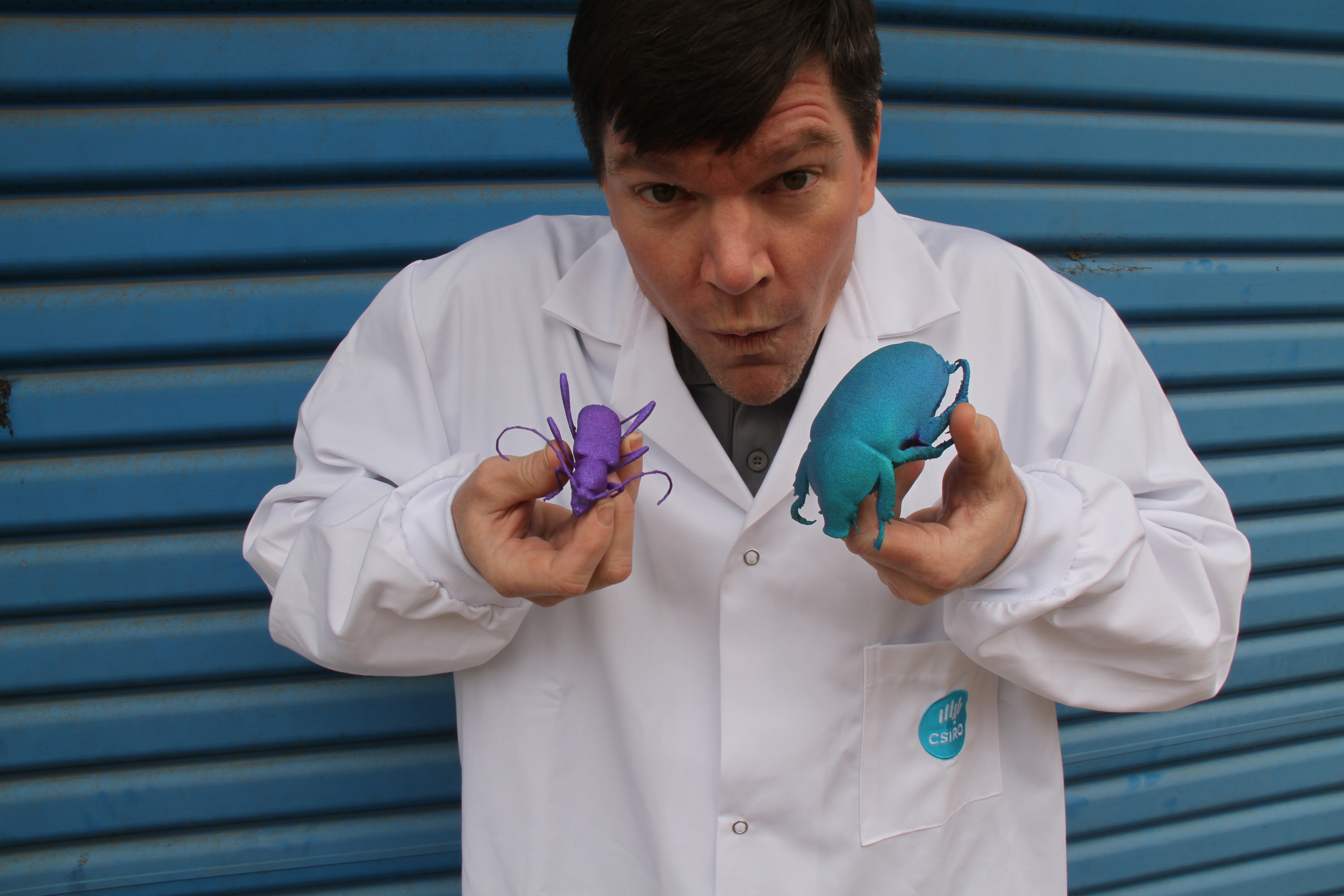Chad Henry with his super-sized creatures
This week, we’ve taken minuscule insects, like wheat weevils and Christmas beetles, and scaled them right up to almost 40 times their original size using a 3D scanning system.
We took the scanned files and sent them through our 3D printer and…. Voilà! In just 10 hours there were GIANT bugs everywhere, made from the finest quality titanium of course.
Our scientists are buggin’ out at the new 3D printed creatures because they show exciting new potential for entomologists studying the anatomy of miniscule insects by enabling them to physically handle them and study their features right up close.
They believe this technology will soon enable them to determine characteristics, such as gender, and examine surface characteristics which are otherwise difficult due to the minute size of, say, a tiny wheat weevil at only 3mm long.
Although printing bugs is unchartered territory for our scientists, they’re usually busy working in areas such as aerospace, automotive and biomedical, it brings together two really important areas of science – entomology and material science.
So weev (pardon the pun) still got a lot to learn from these super sized beetles and wheat weevils, but for now, we think our big bugs are the crème of the crop.



4th July 2013 at 11:27 am
On the photo there is not a “wheat weevil” but a longicorn beetle and a Christmas beetle are in the hands of Mr Henry.
Using common names that is not accepted in Australia is unfortunate. The granary weevil (Sitophilus granarius (Linnaeus)) is between 3-5 mm long. It is not tiny at all. To be able to identify it and study it a $350.00 stereo microscope with 40x magnification capabilities is more than adequate. In store environment a hand lens of 10x magnification is more than enough to identify it.
These days most of the entomological laboratories are equipped with stereo microscopes with over 150x magnification and compound microscopes with over 1000x magnification. Digital imaging technology has improved enormously during the last decade it is not only enable us studying very fine details but also these features are depicted in true colours. Many of the Departments are also equipped with Scanning Electron Microscopes with 20x-30,000x magnification capabilities. Hardly any advantage for 3D printing in magnification or capabilities to enable us to study the microstructure any better or greater details.
Perhaps unbeknown to the author the insect identification often based on internal anatomical features such as genitalia. Titanium “sculptures” don’t allow us to study the internal organs hence they offer very little advantage in study or identification.
They look good though…
27th June 2014 at 4:18 pm
Hi Andras,
I missed this post and your comment so sorry for the long delay and reply. It is a while since these insects were made and a pity that the article did not mention more about the exciting collaborative aspect of this research. The insects were produced as part of an investigation in looking at detailed scalability in reproducing insects from the Australian National Insect Collections without causing any harm to the actual specimens. At the same time we were also exploring software through Drishti (open source software) that enables the user to “see” inside the model.
If you are interested there is a little more detail in this paper: Art and Science as Creative Catalysts http://visap2013.sista.arizona.edu/papers/Stuart_CreativeCatalysts.pdf
Cheers